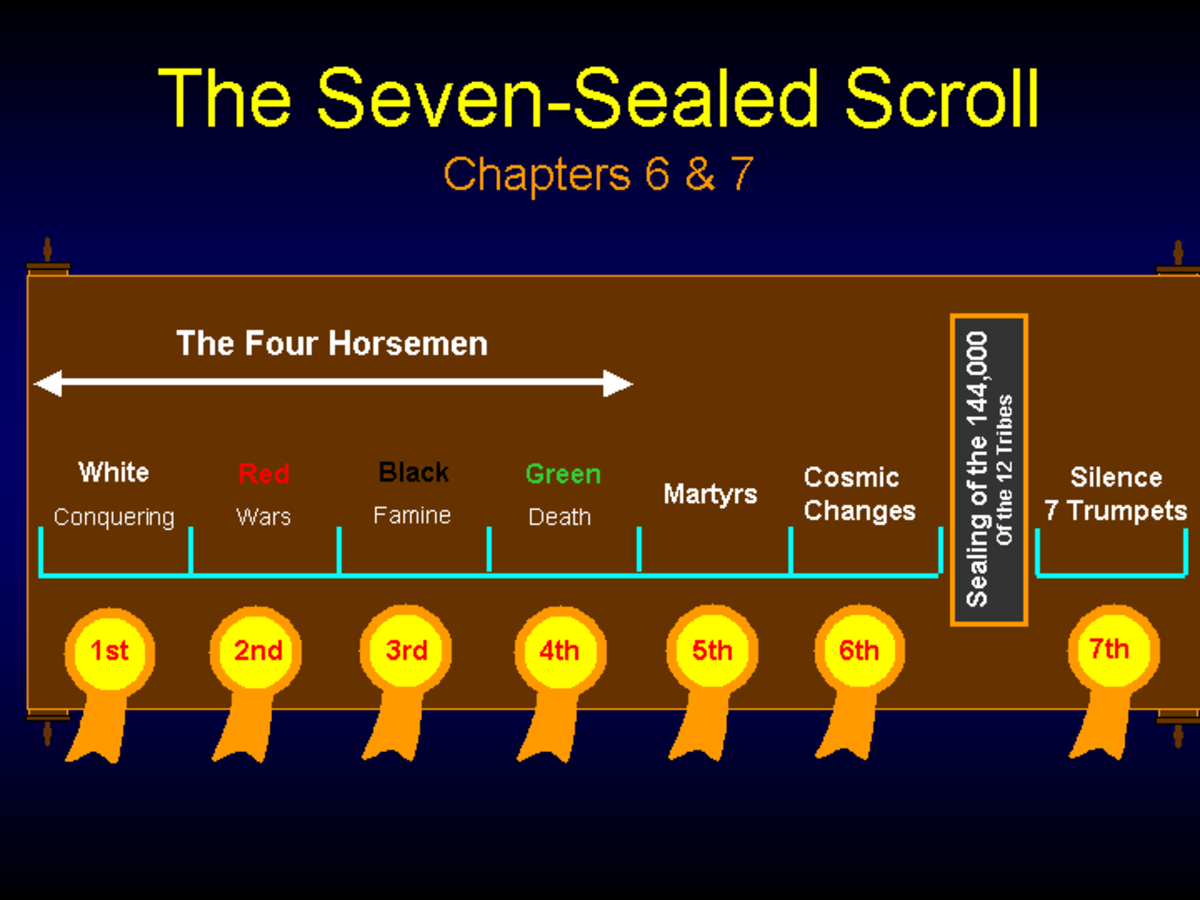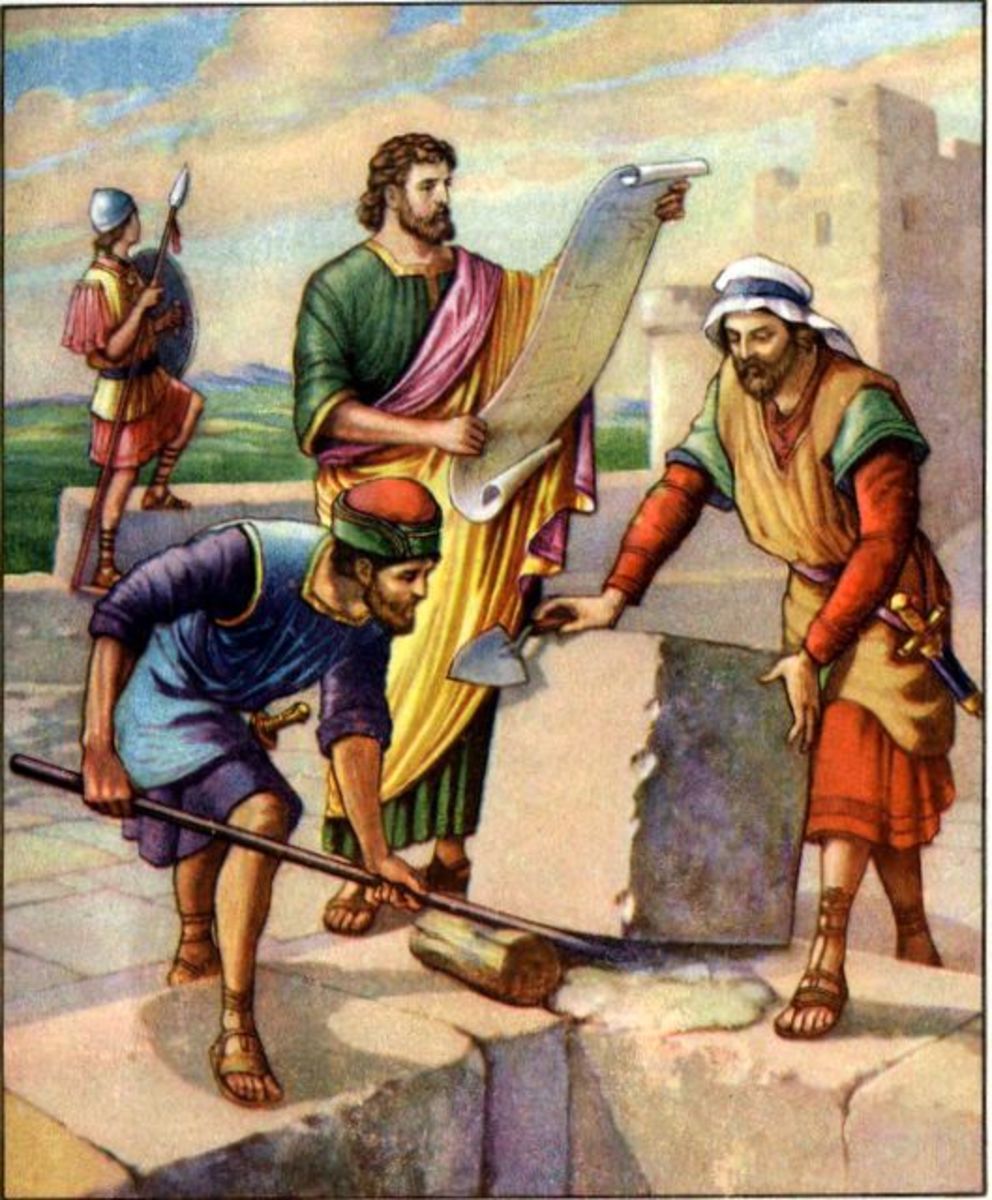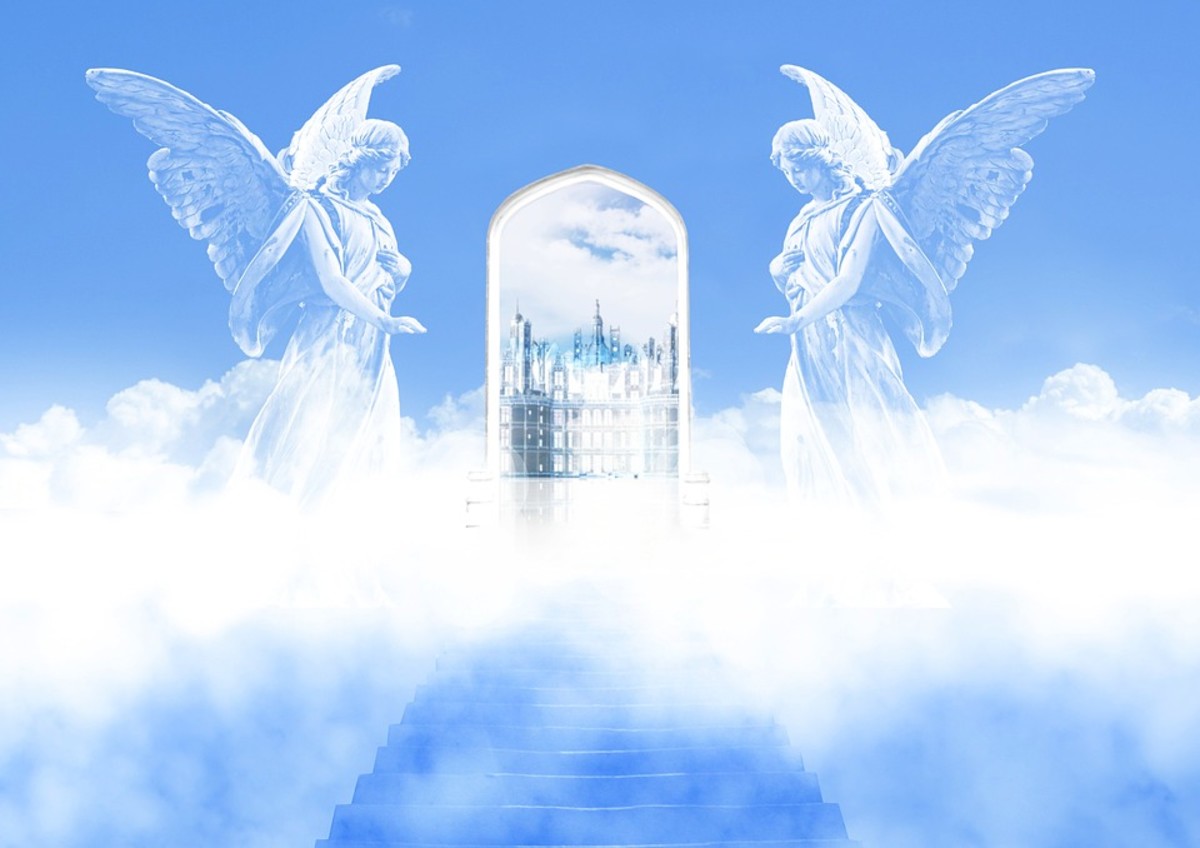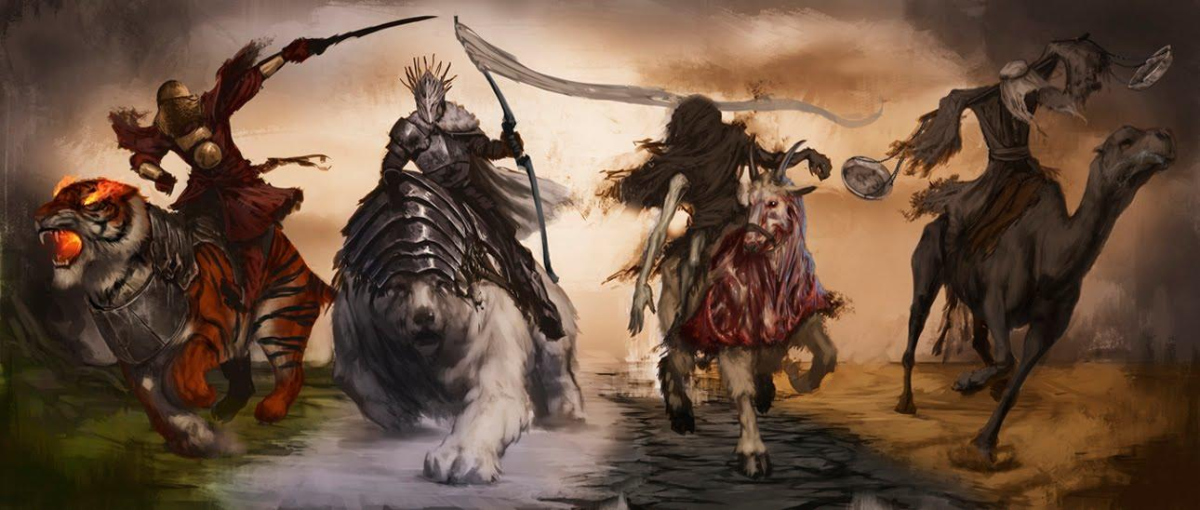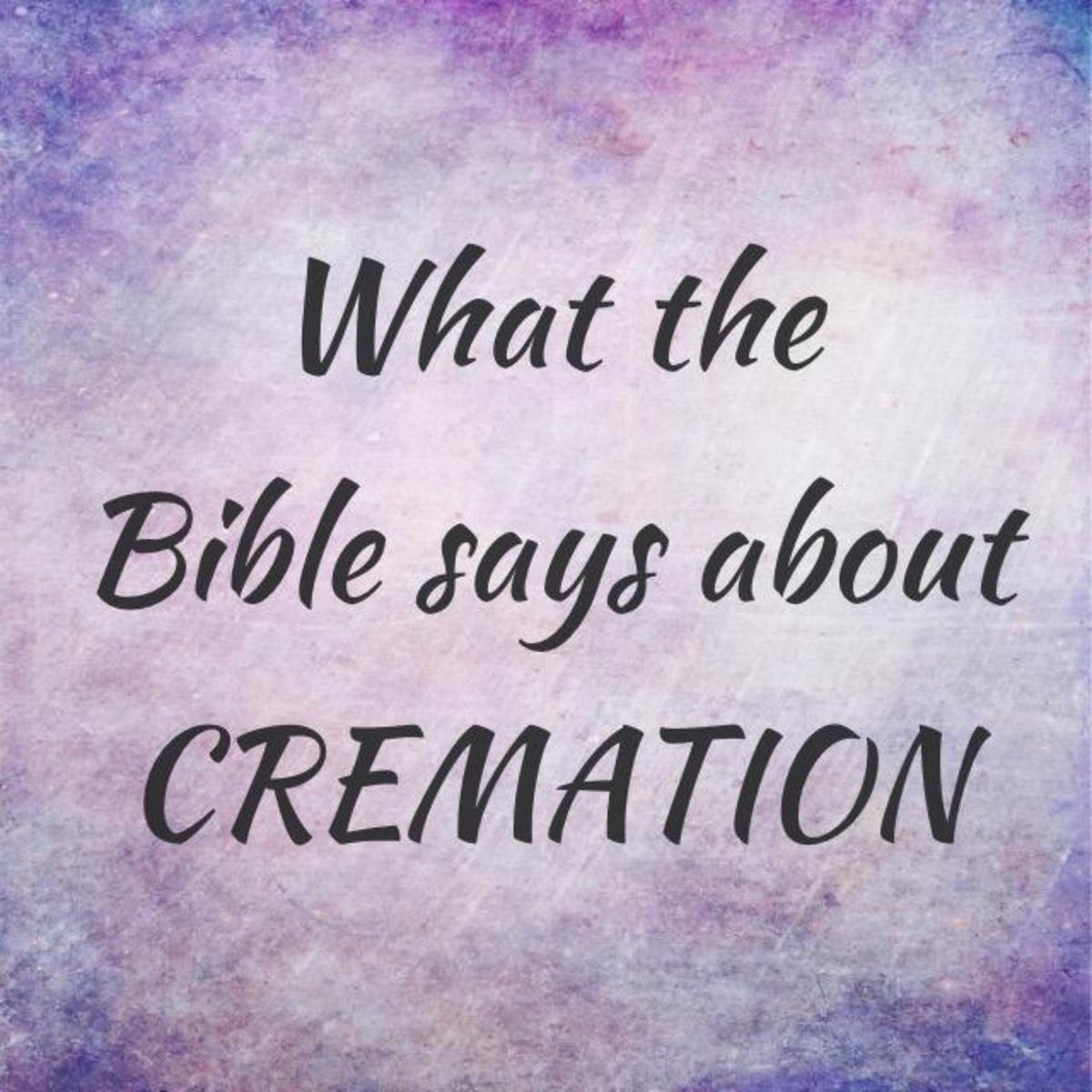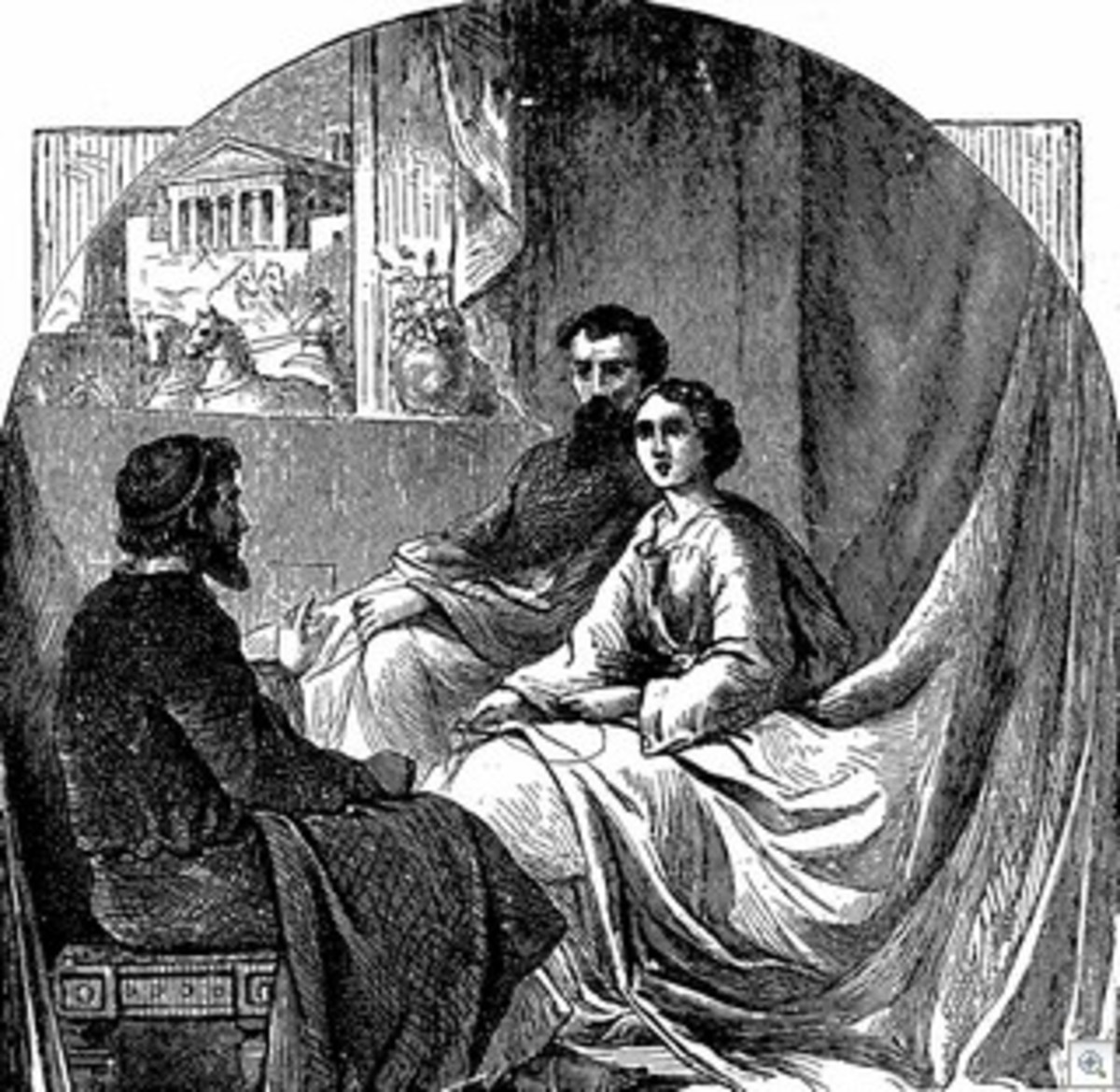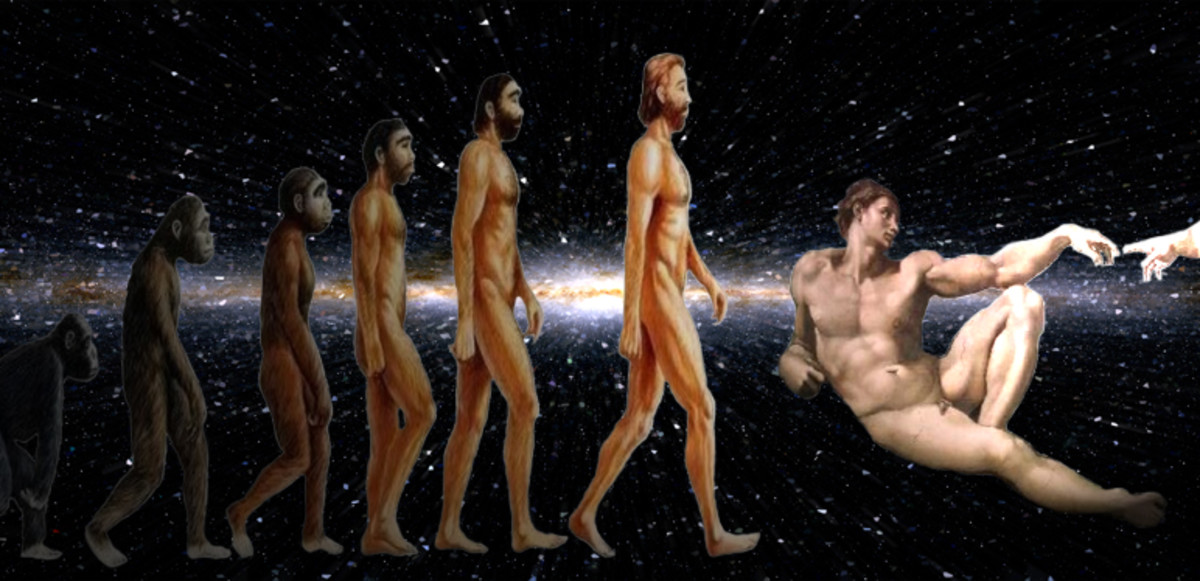The Jewish Marriage Analogy in Revelation
The ancient traditional Jewish marriage ceremony tells us a lot about how to understand Revelation, the last book of the New Testament. Jesus used Jewish marriage customs in his parables—recorded in the four gospel accounts—even referring to himself as the groom.
In his reply to a question, for example, about his disciples not fasting, he suggests in Matthew 9:15 that while he is yet with them is not the time for mourning. He does this by referring to guests at a wedding not being sad while the groom is with them, as an analogy.
Analogy to the Jewish wedding ceremony is also used in Revelation. I will look at some of the ways this is done. First, consider this summary of the traditional Jewish marriage customs, before the eleventh century when engagement and wedding ceremonies were still separate events.
Jewish Marriage Tradition - Summarized
- A young man brings his father to knock on the front door of a young woman’s family.
- A Jewish prenuptial agreement is made with the prospective girl’s father, agreeing on a price.
- This and the rights and responsibilities of the groom, in relation to the bride, are outlined in the ketubah (marriage contract) as protection for the future wife.
Jewish bride waits with a lit lamp

Jewish bridegroom comes to fetch his waiting bride

- Witnesses sign or seal this contract. In Christ’s time it was a Roman custom to have 7 witnesses. The prospective bride drinks the wine the young man pours as a sign of her acceptance.
- Any betrothed Jewish man of Jesus’ time would not know his exact wedding date. No one knew the day or the hour, except the groom’s father. The groom did not fetch his bride until his father determined the groom had sufficiently completed the bridal chamber.
- The Jewish bride was in a state of constant preparation after the signing of the wedding contract. She focuses on preparing items for her home, and each evening she waits with a lit lamp, until falling asleep.
- One night, before midnight, upon seeing the lit lamp, the bridegroom comes. The groom’s party arrives with trumpets and a great noise, letting the whole neighborhood know the wedding is about to take place.
Where this marriage analogy is used in Revelation
In the following table, the left column expands on this summary of a Jewish marriage. Each row states a step in the process. The right column refers to where in Revelation this step is used as an analogy, and what it may symbolize. (References of help to other parts of the Bible are included in parentheses.)
Jewish Marriage Tradition
| Symbolism Used in Revelation
|
|---|---|
Young woman's father opens to the knock, if his daughter wishes to see if terms for betrothal and functioning marriage can be arranged.
| The Lord's message to His church is that He is knocking, so commit to God and repent, 3:19-20. Be faithful, not lukewarm, to be Christ's bride.
|
Young man writes a Ketubah, a contract (or covenant) that is witnessed and sealed.
| The Lamb being slain prepared the way for the new covenant, 5:6-7.
|
He presents it to the intended bride, included with a 'bride price.'
| The Lamb receives the contract for which He paid the price, 5:8.
|
Prospective bride drinks the wine he pours, if she accepts the proposal, sealing the contract and they are considered betrothed.
| His church (saints) accepts the new covenant with The Lamb, the only one worthy, 5:9-10.
|
Prospective bridegroom gives gifts to his beloved, announcing, "I am going to prepare a place for you," and "I will return for you when it is ready.
| Listen to what the Spirit is saying, 2:7. His gifts are the Holy Spirit and peace (Jhn 14:2-3, 27).
|
He then takes his leave to build a honeymoon room onto his father's house. Prospective bride waits for him to return and collect her.
| No one could enter the sanctuary in heaven until the seven plagues were completed, 15:1, 8.
|
The bride customarily keeps ready a lamp, her veil and her other things beside her bed.
| The saints repent, remain faithful, committed and alert and hold on to what they have, 2-3.
|
When young man's father approves the wedding chamber as ready, the bridegroom comes after sunset to steal his bride away like a 'thief,' between 6 and midnight.
| The Lamb comes and His wife is ready, 19:7; alert (1Th 5:1-4); not foolish (Mat 25:1-13); not evil or unaware (Luk 12:37-41; 21-34-35).
|
Unannounced the groom and his friends come close to the bride's house. If bride's welcoming light is in her window, he gives a shout and a 'shofar' is blown to let her know he has come.
| Jesus comes and gathers to Himself those with the Spirit (inner light), 14:16; descending with a shout and the trumpet of God (1Th 4:16-17; Mat 25:6). Welcomes Him as King, 19:6, 16!
|
(If the light is not in her window, he leaves. The bride is the only one who could still back out before the marriage consummation.)
| An angel harvests the 'grapes' (those destined for wrath, who reject Christ) and throws them out for God's wrath, 14:19; 19:15.
|
Marriage ceremony takes place. (The Jewish chuppah or canopy symbolizes the wedding chamber.)
| Marriage takes place in heaven, 19:7-8.
|
Honeymoon in the wedding chamber.
| Those who are written in His book of life, The Lamb's bride, are taken into the New Jerusalem, 21:9-27. (Jhn 14:1-3; Ps 27:5)
|
The couple emerges to join the feast, celebrating with the wedding guests for seven days.
| Blessed are those invited to the Lamb's marriage feast, 19:9.
|
Do you think the scroll with seven seals seen in Revelation 5:1 is like the Ketubah, or marriage contract?
Some questions
In looking at this Jewish marriage analogy used in Revelation, we see it is a revelation of Jesus Christ coming for His waiting bride. An understanding of Jewish marriage customs helps us begin to see what this analogy may symbolize and thus be saying to us.
For example, here are some questions this analogy brings to mind:
- Do you think the Ketubah, or marriage contract (in row two), is the scroll with seven seals seen in Revelation 5:1? Could it be the Father saying it is time for His Son to go fetch His bride from the earth?
- Customarily, under Roman law, wills were sealed with seven seals, each from a witness to the validity of the will. All the seals then must be opened before the scroll can be read. When is the scroll fully opened in Revelation?
What do you think all this tells us about what the scroll symbolizes?
© 2011 Deidre Shelden



